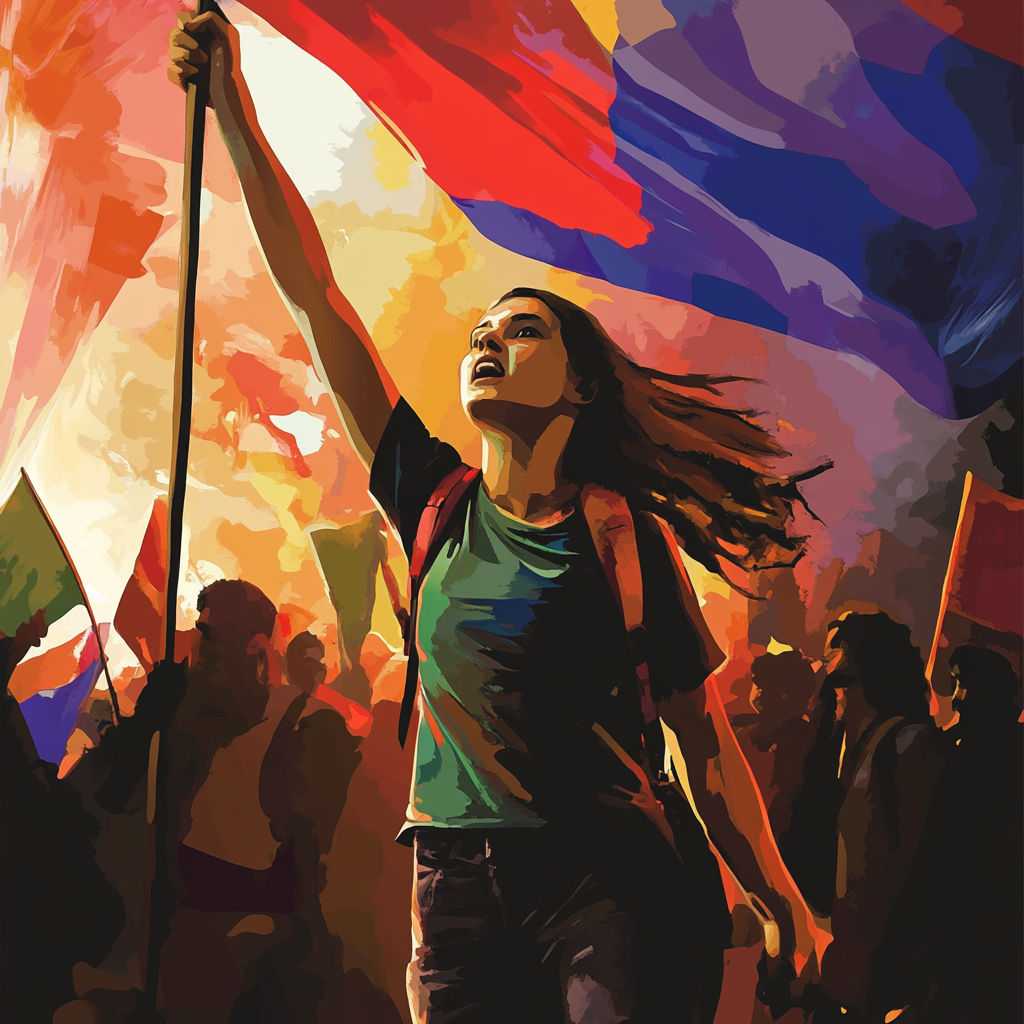I will never forget the exact moment when the concrete canopy of the recently reconstructed main railway station in Novi Sad, the second-largest city in Serbia, fell and killed 15 people and injured two. It changed everything. Government tabloids and officials tried to spin the story like the canopy was never reconstructed. When that didn’t work out, they shifted the blame to the original architects from more than 60 years ago. To add insult to injury, the station was pompously opened two times.
To commemorate the victims, university students blocked streets for 15 minutes everyday in complete silence. But on 22nd November, students were physically assaulted by men, one of whom was a government official of Belgrade. The lack of reaction from the police, prosecutor’s office, and lack of political accountability sparked outrage in the wider student community, which led them to organize plenums (democratic assemblies) in their respective faculties and declare total blockade until their demands were met. In the following months every public university in Serbia, and a few private ones, entered into a blockade. That entailed no lectures, no exams, and no other university activities until students’ demands were met because their hands are bloody. The demands include the release of all documents related to the canopy reconstruction and accountability for those responsible, identification and prosecution of attackers on students and citizens during the protest, dismissal of charges against arrested protesters, and a 20% increase in the education budget.
These demands sound rational (all except the budget increase). But even though the protests are “apolitical”, they carry one implied political meta-demand which makes it impossible to fulfill all the demands: the total collapse and criminal prosecution of Aleksandar Vučić government.
How so? Serbia is a soft dictatorship according to Freedom House . Everything is connected to the ruling Serbian Progressive Party. Everything. Including who can get a job in public institutions to capital projects such as Belgrade Waterfront. It is all influenced by the top leadership of the SPP. These in combination with a controlled judiciary make it impossible to hold the right people accountable, and students know that. President Vučić and other government officials flip-flop daily with claims that all student demands were already met and that they are foreign agents who hate Serbia and only want to destroy it, to releasing documentation spoonful at the time and seldomly prosecuting attackers on demonstrators.
What makes this protest a beacon of new hope is the fact that nobody is left unaffected by the canopy fall. On previous occasions where we had massive protests, there were a bunch of “apolitical” people who weren’t too keen to join.
For example, we had the “1 of 5 million” movement which was a response to the rise of political violence, but eventually, it failed because many people perceived it as too political over time and, to put it bluntly, not too many people cared. Topics such as the rule of law, corruption, press freedom and such are topics perceived as abstract and not affecting “our” daily life and livelihood, and besides, “they” (as in political opposition) only use such topics to get a hold of the office, is the very thinking of many people in Serbia which is successful tactic and spin used by the government-controlled media. But the canopy fall left nobody unaffected because anybody could have been under it.
The second reason why these protests are so successful is because there is no single person leading them, and they are pretty much decentralized. That is a good thing because the government and its tabloids can’t target any single individual to discredit the whole movement, especially not the opposition actors who are banned from protest. In my opinion, this is a double-edged sword.
On one hand that is a good decision that led many people to join protests, especially the aforementioned “apolitical” ones, but on the other hand, change that they demand is only possible through political means, by winning elections. It’s a breath of fresh air to see pictures of more than a hundred thousand people protesting on Slavija Square in Belgrade, but it all becomes wasted potential if it’s not channelled politically.
Unlike the protests in Georgia, these are not liberal protests. Yes, they demand the rule of law and justice, and that is great! But, you can see many Russian flags and a lot of “No surrender” flags, a nationalistic Kosovo-related slogan, that sets the tone. Yes, the majority is still “apolitical”, but this leaves the door open for right-wing extremist to easily take over the protests and apolitical majority.
For more than 30 years, even after the bulldozer revolution, Serbia has been led by very bad ideals, and we have to change that. These protests are hopefully the beginning of a good change, but we must learn from past mistakes and not repeat them again.
This piece solely expresses the opinion of the author and not necessarily the magazine as a whole. SpeakFreely is committed to facilitating a broad dialogue for liberty, representing a variety of opinions. Support freedom and independent journalism by donating today.
